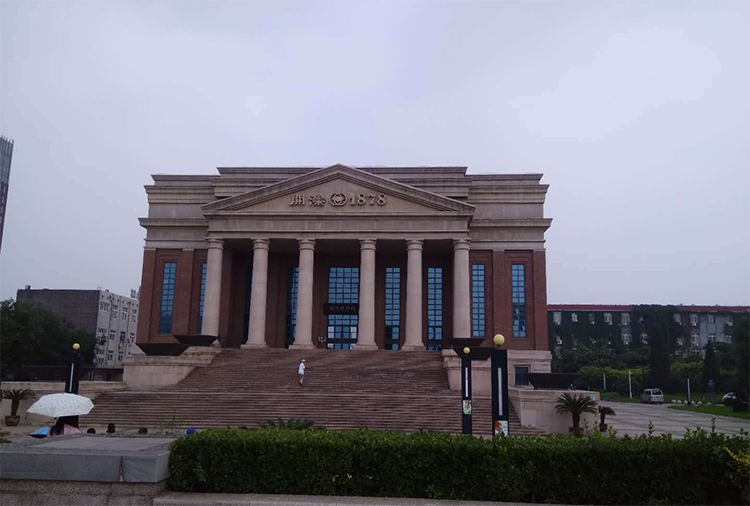Explore Kailuan Coal Mining Museum: A Visitor’s Guide to China’s Industrial Heritage
When the whistle of a steam locomotive split the North China sky in the late 19th century, modern industrialization in China began with a roar on the soil of Tangshan. Today this city—shaped by steel and coal—condenses its industrial memory in a unique institution: the Kailuan Museum. Rare among global institutions as a coal-mining museum, it is a three-dimensional history text written in iron, slag, and sweat. Entering this cultural space, converted from a century-old coalfield, you embark on a subterranean time travel that lets you feel the pulsing heartbeat of mechanical civilization.
1. Industrial heritage living fossil: From mine to museum across a century
In 1878 the Qing government established the Kaiping Mining Bureau (the precursor to Kailuan Coal Mine) and sank the first shaft here, making it one of China’s earliest large-scale mechanized mines using Western technology. In 2010 a dark-gray modern complex rose on this ground that witnessed the birth of China’s modern industry, preserving original headframes, winding houses and other relics. The main building’s design draws on mine tunnels—rusted steel panels hint at the buried coal seams while glass skybridges evoke shafts leading to daylight. As a national industrial heritage tourism site, every brick and beam tells Tangshan’s dramatic transformation from a “coal capital” into an innovation-driven city.
2. Museum highlights: Touch the warmth of industrial civilization
The permanent exhibit called the “Black River” presents three signature treasures that unlock China’s industrialization story: the late-Qing “Long” locomotive model—built in 1881 and credited with sounding the first railway whistle in China; a 1940s miner’s stable lamp, whose glass dome still bears the oily fingerprints of miners; and most impressive, a century-old coal face relocated intact from 300 meters below ground, its seam cross-section and fossils visible on hydraulic supports. These objects are not frozen artifacts but time capsules linking past and present—place your palm on the same spot on the display glass where miners once touched, and you complete a handshake across a hundred years.

3. Immersive experiences: A descent into the earth with technology
The museum’s original “Underground Exploration” route overturns the usual museum visit. Don a hard hat, board a simulated cage elevator and descend 54 meters; in the cool blue light you’ll walk through a life-size replica of a Republican-era tunnel. The roar of hydraulic drills and holographic projections recreate tunnel-support operations, while a sudden simulated water inrush 4D sequence will make you instinctively grasp for a lifesaving pipe. Back above ground, the “Digital Coal Sea” interactive hall lets you “mine” seams on touchscreens while real-time energy conversion data is calculated—this blend of industrial heritage and VR has placed Kailuan among the world’s most innovative industrial museums.
4. In-depth visiting routes: From quick highlights to study tours
– Essence route (90 minutes): Main hall intro → “Spirit of the Mine” sculpture → Steam locomotive gallery → Underground Exploration → Energy Futures zone. If you have more time, add 60 minutes for the west annex “Age of Electricity,” which preserves a 1936 generator set.
– Study route (3 hours): Adds the miners’ life reconstruction area, the industrial heritage archives (reservation required), and the special “Coal Art” exhibition featuring a coal-carved Qingming Scroll and award-winning mine photography. On the first Saturday morning of every month the museum runs a family-friendly “Find the Mine Code” activity where children collect virtual ores using AR devices.

5. Practical information and local tips
– Opening hours: Tuesday–Sunday 9:00–16:30 (last entry to underground areas 15:30)
– Tickets: Main hall RMB 60; combined ticket with underground experience RMB 100. Foreign visitors presenting a passport receive a 20% discount. Book in advance via the “LeYou Ji” platform.
– Getting there: Take Tour Bus 1 from Tangshan Station to the “Kailuan Museum” stop, or taxi from Tangshan Museum about 12 minutes.
– Hidden experience: The back-of-house “Miner’s Teahouse” serves a charcoal-brewed milk tea; the cup coaster is a replica of Republican-era miner ration coupons.
– Notes: Underground temperature is a constant 14°C—bring a light jacket in summer. Visitors over 65 must sign a health declaration to join underground programs.
As the sunset gilds the museum’s wheelhouse silhouette, you’ll understand why National Geographic called this an exemplary industrial-tourism site. Kailuan Museum dismantles industrial-site clichés with technology and storytelling: it is not only an archive of the past but a living history awakened by modern methods. Standing before a restored steam boiler, watching light play on cast-iron textures, you touch not only China’s industrial yesterday but a modern city’s phoenix-like rebirth. This descent into the earth will be one of your most metallic, memorable anchors when touring North China.


